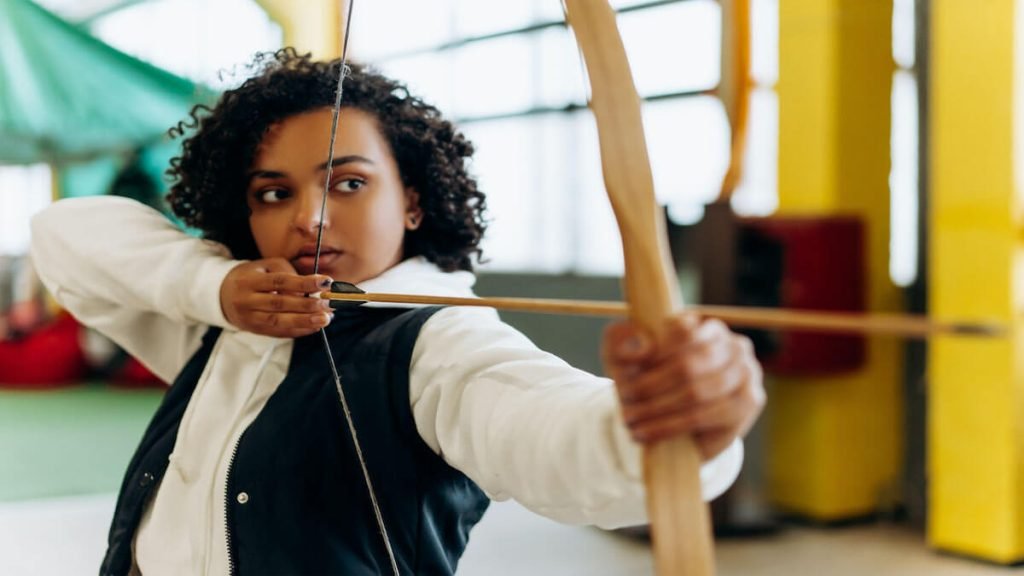Archery, an ancient sport of precision and skill, has captured the imagination of individuals for generations. Drawing a bow is the essential foundation of archery, serving as the starting point for every accurate shot. Whether you’re a novice embarking on your archery journey or an enthusiast seeking to refine your technique, mastering the art of drawing a bow is crucial. In this guide, we’ll delve into five fundamental tips designed to help beginners navigate the intricacies of drawing a bow and hitting the mark with confidence.
Table of Contents
Understanding the Basics
Before you draw a bow, it’s important to grasp the fundamental concepts that underpin this ancient art. A bow is a simple yet intricate tool designed for precision and power. Its components include the riser, which is the central handle, and the limbs that curve away from the riser. The bowstring, crucial for launching arrows, connects the limbs and stores energy as you draw. Various accessories, such as sights and stabilizers, can enhance your accuracy.

As a beginner, consider starting with a recurve bow. Its straightforward design allows you to focus on your form and technique without the complexity of advanced features. A proper understanding of these basics will lay a solid foundation for your archery journey.
Proper Stance and Posture
Aiming true begins with establishing a sturdy foundation through your stance and posture. Imagine your body as an unshakable tripod—feet shoulder-width apart, aligned with the target, and forming a strong base. Keep your body relaxed yet firm, ensuring you’re not tensing up with unnecessary strain. While holding the bow, distribute your weight evenly across both feet. Slightly angle your leading foot forward, allowing your hips and shoulders to naturally align with the target. Maintaining a slight bend in your knees provides balance and absorbs any potential recoil, allowing you to maintain control during the draw.
Nocking the Arrow
Nocking an arrow is a fundamental step that bridges the gap between the bow and your target. Grasp the arrow by its shaft, positioning the nock—a small groove—at the end of the arrow, between the bowstring’s strands. As you slide the nock onto the string, ensure that the index feather or vane faces away from the bow, towards you. This orientation minimizes arrow oscillation and helps maintain a straight flight. A secure nocking position ensures consistent arrow placement, setting the stage for accurate shots. Regularly practicing this skill refines your muscle memory, making each nocking action a fluid part of your archery routine.
Developing Drawing Technique
Mastering the art of drawing the bowstring is where precision meets power. Begin by gripping the bow handle with a relaxed yet controlled hand. As you extend your drawing arm, feel the tension in the bow increase. Engage your back muscles by squeezing your shoulder blades together, allowing them to drive the draw. This technique, known as “back tension,” distributes the effort across your larger muscle groups, resulting in a smoother and more consistent draw. Imagine pulling the string toward your anchor point as if drawing a straight line. With practice, you’ll build strength and form, turning your draw into a fluid and controlled motion.
Finding Your Anchor Point
The anchor point, a pivotal detail in your shot process, ensures a consistent alignment for every draw. It’s a reference point on your face that you’ll consistently use to draw the bowstring. Common anchor points include the corner of your mouth or the tip of your nose. As you draw the bowstring, your hand, and string should consistently meet this anchor point. Practicing in front of a mirror or using an archery simulator can aid in perfecting your anchor point. Achieving a reliable anchor point not only improves accuracy but also streamlines your shot process, allowing you to focus on your aim and release.
Bottom Line
Drawing a bow is a fundamental skill in archery that requires practice, patience, and attention to detail. By understanding the basics, perfecting your stance, nocking the arrow correctly, developing your drawing technique, and finding a consistent anchor point, you’ll be well on your way to becoming a proficient archer. Remember, practice both on the field and in your mind, visualizing each step of the process. With dedication and continuous effort, you’ll draw your bow with confidence and hit your target with precision.


